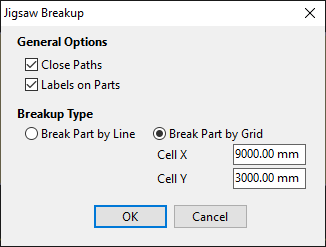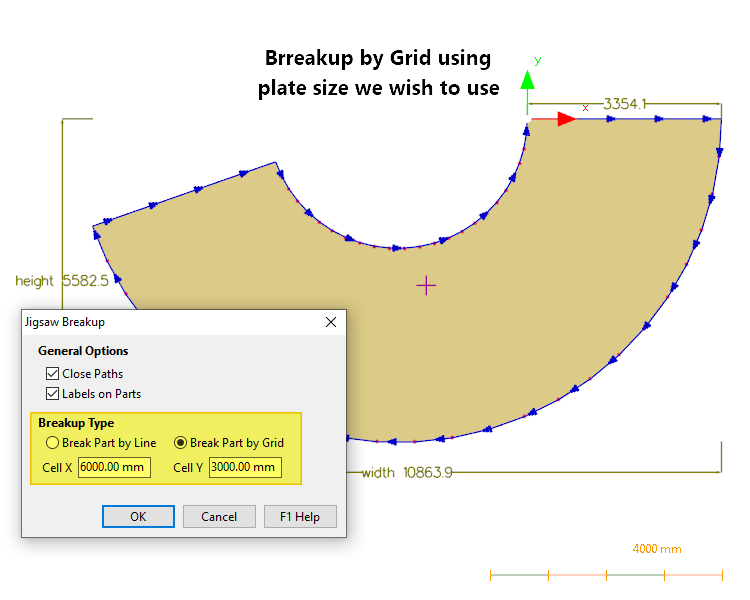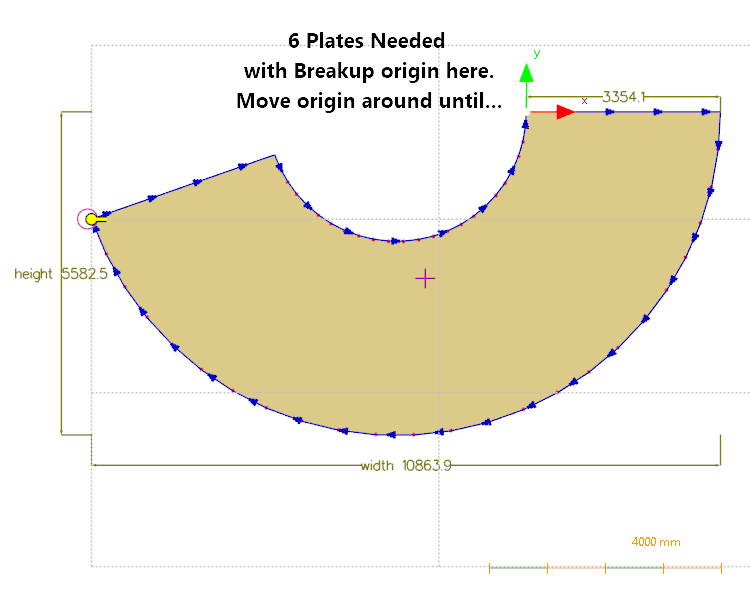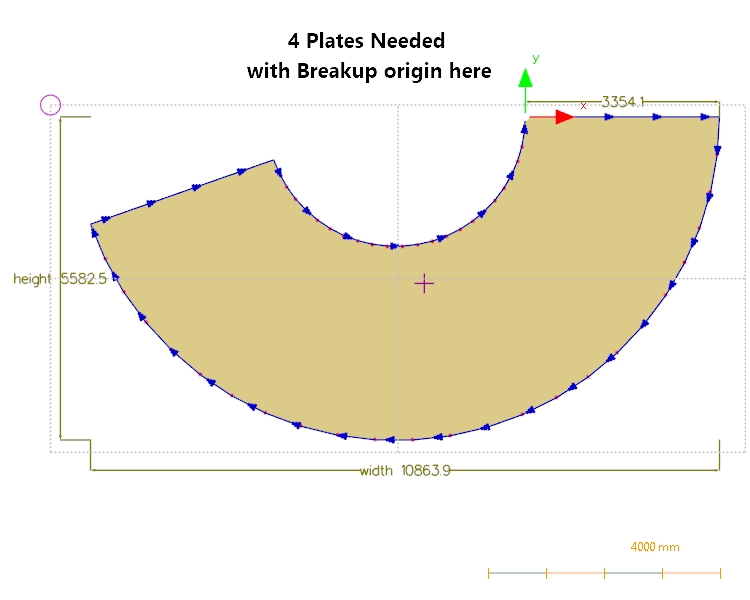This feature is used when the part is too large to be cut as a single piece. When used the initial geometry will remain in the database, and the geometry resulting from the breakup will also be added.
1.Press the Jigsaw Breakup button and a dialog will be displayed for you to select a few parameters.

▪If Close Paths is checked then the geometry that is created will have a line added to make it an intact part. If not it will be an open path, and probably of little use.
▪Labels on Parts will label the resulting parts as A, B, C etc, or [1,0],
▪Break Part by Line is used when you want to manually draw a line in order to split the part into two. The 'snaps' used in the geometry editor can be used here to control where the line is placed.
▪Break Part by Grid allows you to define a grid and breakup the part using that. Typically the grid cell size is set to the plate size you ware wanting to nest the pieces on. Wherever you click on screen will be the corner of the grid, and once again you can use the 'snaps' to control where the corner will be located. A second click is used to orient the grid, and holding the SHIFT key will align the grid or line with the X and Y axes, which may be useful depending on the application.
2.Click on OK once you have the desired parameters and then click on the part to draw the line or apply the grid. When applying a grid, you can for example select the bottom left corner of the part.
3.The new parts will appear in the window at the left hand side of the screen. To make their identification easier you should RIGHT CLICK on them and select Show Properties from the menu, then give them a meaningful part name.
This can be used in parts mode, in which case new parts are simply added, or in workorder or quote modes, in which case new parts are added as well as new line items. In the latter case, the quantity required on the original line item is transferred to the new line items, and then zeroed on the original broken up part.
Example: Breakup of a Large Cone Development
A development of a large cone has been produced, however it is too large to fit on a single plate:
 |
 |
 |
 |